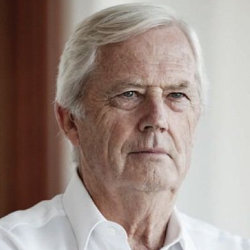
Danielle Wood’s appointment as the Chair of the Productivity Commission is, in my opinion, an inspired choice, and I have no doubt that she will do an outstanding job, as she has done as CEO of the Grattan Institute.
In particular, I hope that in her new role, Ms Wood can help to undo what I regard as, along with the Abbott Government’s abolition of the carbon tax, one of the worst public policy decisions of the 21st century – namely, the changes to the GST revenue-sharing arrangements imposed by the Morrison Government in 2019 in order to bolster its chances of retaining the House of Representatives seats from Western Australia which it needed to retain if it were to have any chance of remaining in government after the 2022 election, and which the then Labor Opposition supported in order to bolster its chances of gaining the House of Representatives seats from Western Australia which it needed to win if it were to have any chance of forming government after the 2022 election.
Those changes to the GST revenue-sharing arrangements involved the trashing of the ‘horizontal fiscal equalization’ principle which had underpinned the allocation of ‘general purpose’ (that is, ‘untied’) moneys flowing from the Federal Government to the states and territories since 1936 – namely, that such moneys should be distributed among the states and territories so as to enable each of them to provide the same range and quality of public services to their citizens if they made a similar effort to raise revenues from their own sources. This long-standing principle is, together with Australia’s national income tax and social security systems, an important reason why the differences in material living standards between Australia’s richest and poorest states are considerably smaller than those between the richest and poorest states, provinces, Länder or cantons in other federations.
These changes followed a PC inquiry into the long-standing system of horizontal fiscal equalization (HFE) commissioned by Scott Morrison, with terms of reference which appeared very much as if they had been drafted by the WA Treasury.
This inquiry was conducted in a very un-PC-like fashion, with scant regard paid to the evidence presented to it both before and after the publication of its preliminary report. In particular, like the previous inquiry into HFE conducted by Nick Greiner and John Brumby, it was unable to find any evidence to support the assertion that the long-standing HFE arrangements acted as a disincentive for states and territories to pursue productivity-enhancing reforms (for fear that to do so might adversely affect their GST shares). But whereas Nick Greiner and John Brumby had the intellectual integrity to acknowledge that the argument that they had both put whilst serving as Premiers of NSW and Victoria, respectively, had no evidentiary basis, the PC asserted that “absence of evidence does not imply evidence of absence” – the same logic that George W. Bush, Tony Blair and John Howard used to justify the 2004 invasion of Iraq despite the repeated inability of UN weapons inspectors to find any evidence that Saddam Hussein possessed weapons of mass destruction (as, indeed it turned out, he didn’t).
I understand that there was considerable discontent among the PC staff who worked on this particular inquiry with the way it was conducted – and that one PC staffer actually resigned in disgust.
As a result of the changes to the GST revenue-sharing arrangements which the Morrison Government imposed in 2019, which were based partly on the PC’s recommendations and partly on Treasury advice, the ‘fiscal capacity’ of the fiscally weaker states and territories will no longer be raised (by the distribution of GST revenues) to that of the fiscally strongest state (which for most of the past 15 years has been WA), but rather to the fiscally stronger of NSW and Victoria (which now, and for the foreseeable future, is NSW). Additionally, the distribution arrangements are subject to a ‘floor’ which provides that no state can receive less than 70% (in 2022-23 and 2023-24) and from 2024-25, 75%, of what it would have received under a hypothetical equal per capita distribution of GST revenues.
What these changes mean in practice is that if iron ore prices remain high – as they have done since these changes were imposed, contrary to the forecasts that were made at the time – such that the WA Treasury is wallowing in mining royalty revenues, Western Australia gets to keep them; but if iron ore prices were one day to fall back to somewhere between US$50 and $70 a tonne (as both the Federal and WA Treasuries keep forecasting), WA’s share of GST revenues will rise just as it would have done under the now-superseded revenue-sharing arrangements.
In other words – “heads WA wins: tails, the Eastern states and the Federal Government lose”.
Why does the Federal Government lose? Because the carve-up of the revenue from the GST is, in principle, a ‘zero sum game’ – that is, an increase in any one state or territory’s share can only be at the expense of one or more of the other states’ and territories’ shares. In order to cajole the eastern states and territories into agreeing to something that was so obviously disadvantageous to them, the Morrison Government provided what it called a ‘transitional guarantee’ that it would ‘top up’ the ‘GST revenue pool’ by whatever amount was necessary to ensure that no state or territory was worse off than it would have been under the now-superseded arrangements, until 2026-27.
At the time, Federal Treasury projected that this ‘transitional guarantee’ would cost the Federal Budget $6.6bn over the eight years to 2027-28 – on the assumption that iron ore prices would come down to, and remain at, around US$55 per tonne. But, largely because iron ore prices have since then for the most part remained well over US$100 per tonne (while the A$ has fallen, thus further boosting WA’s mineral royalty revenues), the cost of the ‘transitional guarantee’ to the Federal Budget has now blown out to a projected $28.4bn. And given the trajectory of iron ore prices since the Budget, that figure will almost certainly be revised up (again) in the Mid-Year Economic and Fiscal Outlook to be presented later this month.
That’s $28.4bn that the Federal Government is borrowing (in every year except 2022-23, when it ran a surplus) and in effect handing over to the only government in Australia, indeed one of very few governments anywhere in the world, which has been running, is running, and expects to continue running budget surpluses. And, which, moreover, is the government of the richest state in the country, richer than the rest of the country by a much bigger margin than NSW or Victoria ever were when they were the richest states in the nation – in each of the past three years Western Australia’s per capita gross state product has been more than 70% above the average for the rest of Australia.
How Federal Labor reconciles that with its professed beliefs in ‘fairness’ and ‘equity’, let alone its claims to fiscal prudence, is completely beyond me.
What’s all this got to do with Danielle Wood?
Well, two things.
First, the Productivity Commission is required to undertake a review of the new GST revenue-sharing arrangements ahead of the expiry of the ‘transitional guarantee’ at the end of 2026-27. Hopefully, Ms Wood will insist on less blatantly biased terms of reference for this review than the ones which Scott Morrison as Treasurer issued to the PC in 2017.
Second, Ms Wood is already on the record, in a report which she co-authored for the Grattan Institute entitled Back in black? A menu of measures to repair the budget, published in April this year, as identifying “winding back the WA GST deal” as an option that would “make a worthwhile dent in spending”, noting that “in effect, the federal government is spending almost $5 billion a year to support superior government services in the only state that is running a strong surplus”.
So Ms Wood has an opportunity to help reverse one of the most ill-advised public policy decisions of this century. Here’s hoping she takes it.




